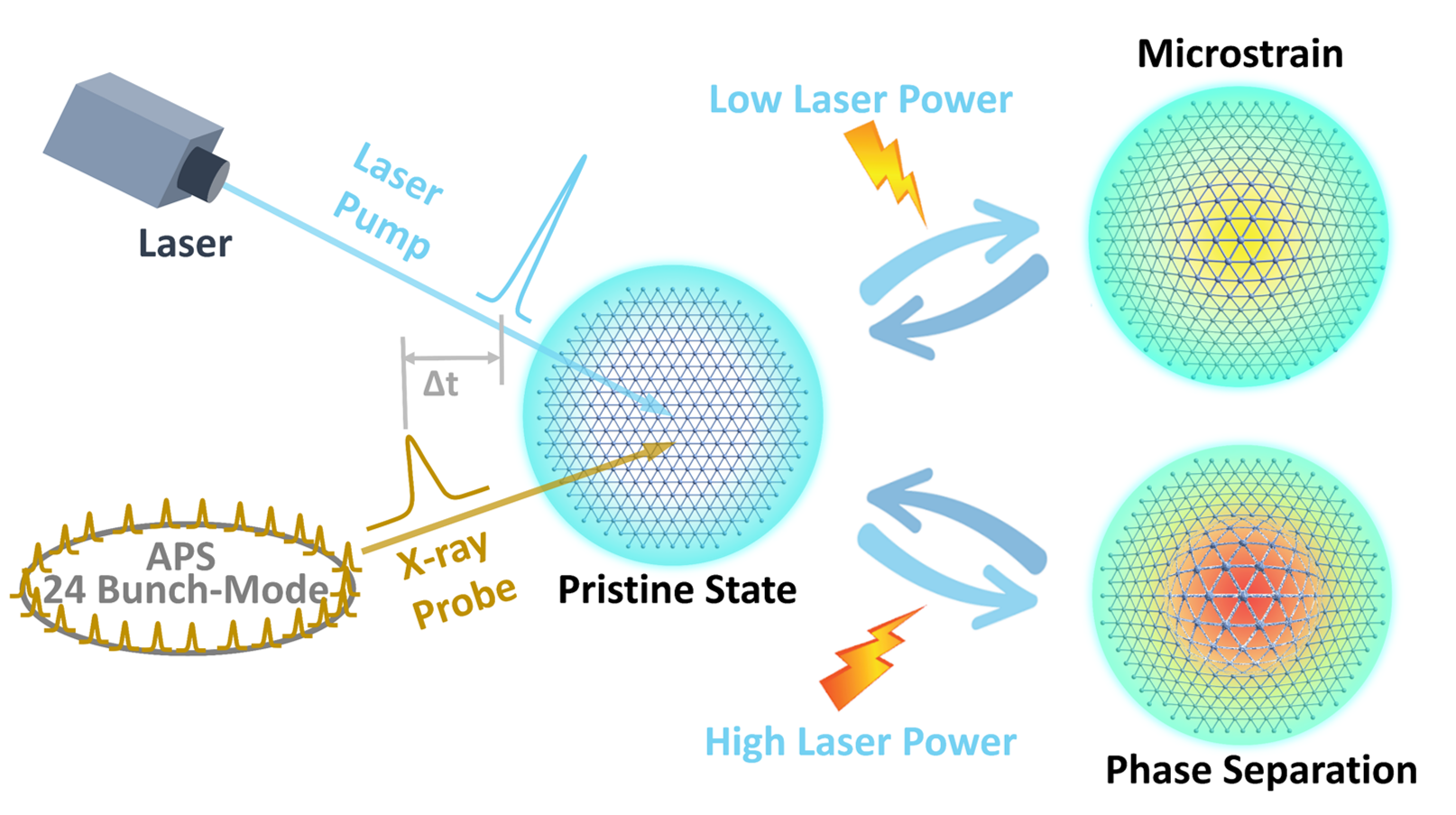Light-induced structural change visualized from time-resolved X-ray diffraction - Dr. Wenge Yang
MARCH 18, 2022
A research group co-led by Dr. Wenge Yang of HPSTAR, has employed ultrafast laser-initiated time-resolved X-ray diffraction (TR-XRD) (with a time resolution of 79 picosenconds) to directly track the structural evolution of a prototypical two-dimensional (2D) lead-free perovskite (Cs3Bi2Br9) upon photoexcitation. Their work, “Visualizing Light-Induced Microstrain and Phase Transition in Lead-Free Perovskites Using Time-Resolved X-Ray Diffraction,” was published in the Journal of the American Chemical Society.
Metal halide perovskites have excellent photovoltaic and optoelectronic properties with huge potential for practical applications. Despite significant progress in device efficiency, our fundamental understanding of their photoinduced structural dynamics, which determines their performance and stability, remains limited.
“Investigating the interplay between the crystalline lattice and photoexcited charge carriers is vital to improving our knowledge of their optoelectronic performance,” said co-lead author of the study Dr. Yingqing Wang former postdoc researcher of HPSTAR, now at University of Washington. “Ultrafast laser spectroscopy has been intensively utilized to explore the charge carrier dynamics of perovskites, but the local structural information can only be extracted indirectly.”
Using advanced time-resolved X-ray diffraction technique to investigate the structural dynamics of prototypical two-dimensional lead-free halide perovskite Cs3Bi2Br9 nanoparticles across temporal scales from 80 picoseconds to microseconds, Dr. Yang and his colleagues observed a quick recoverable (a few nanoseconds) photoinduced microstrain up to 0.15% and a long-existing lattice expansion (∼a few hundred nanoseconds) at mild laser fluence. Once the laser energy high enough, the microstrain would saturate and the crystalline phase partially transfer into a disordered phase.

This photoinduced transient structural change could recover within the nanosecond time scale. These results indicate that photoexcitated charge carriers couple with lattice distortion, fundamentally affecting the dielectric environment and charge carrier transport.
“Both the observed microstrain and phase boundary would increase the scattering and recombination probability of the photogenerated carriers, thus impairing the performance. Solving this problem in the design and development of lead-free perovskites could help enhance their performance and stability in the future, said Dr. Yang.
